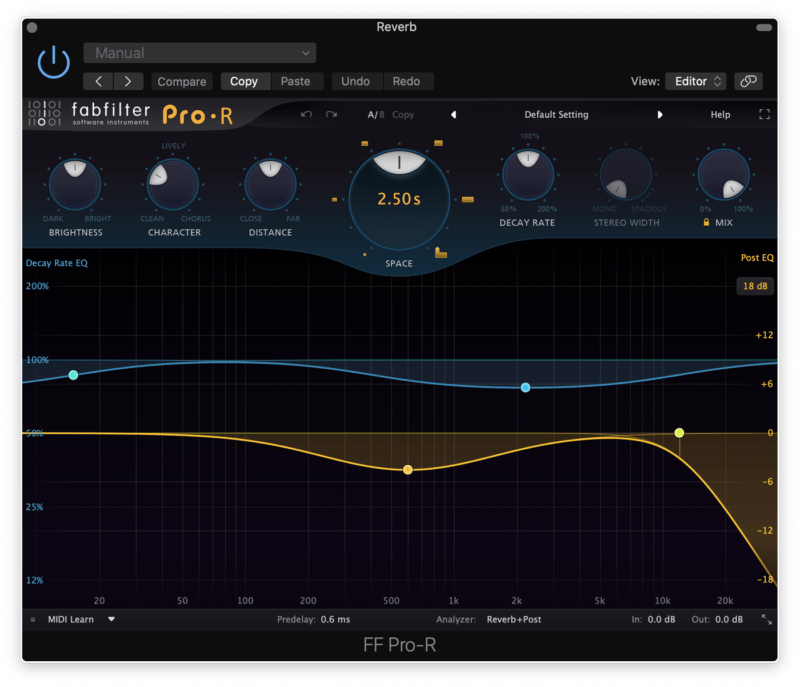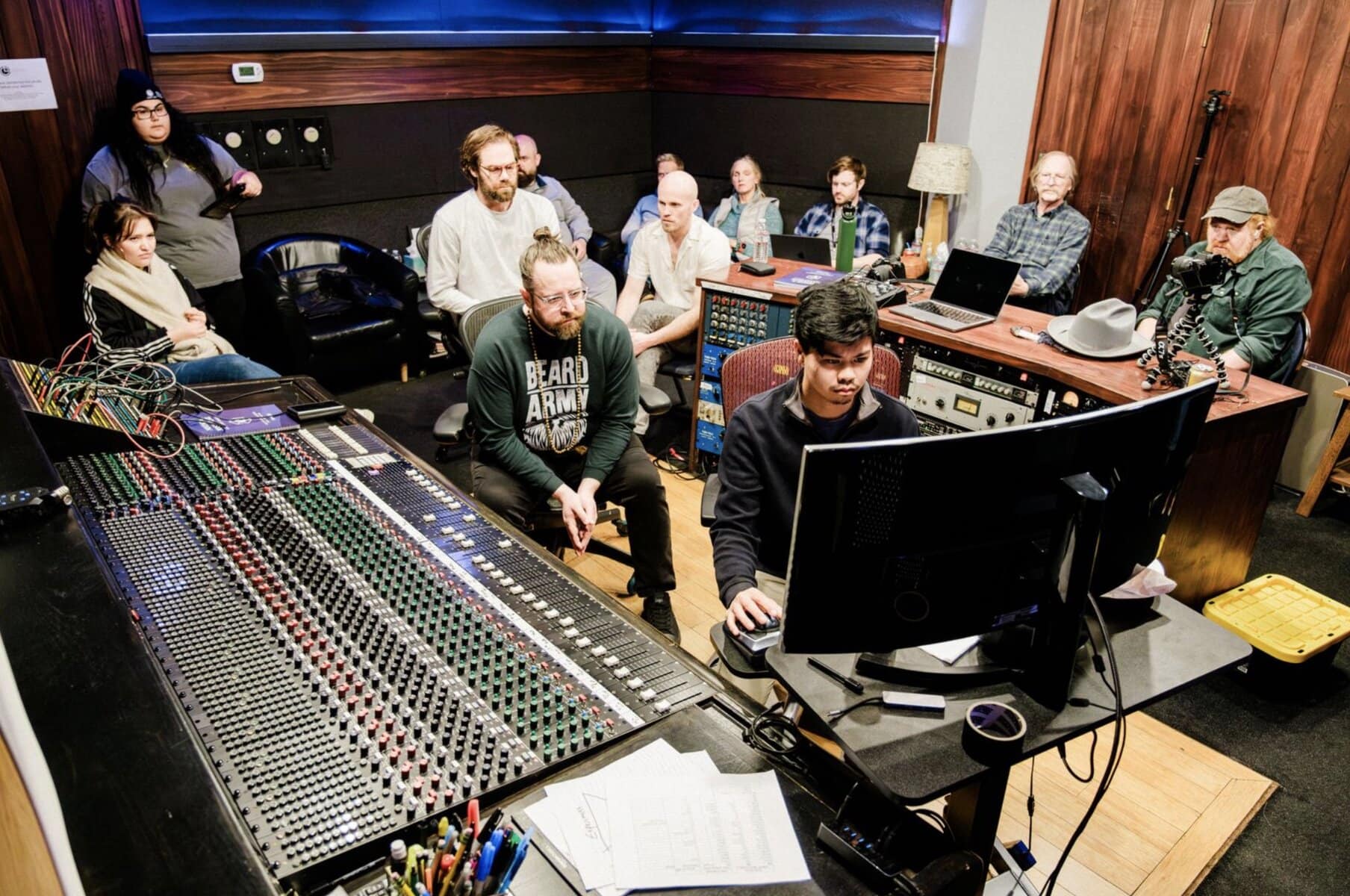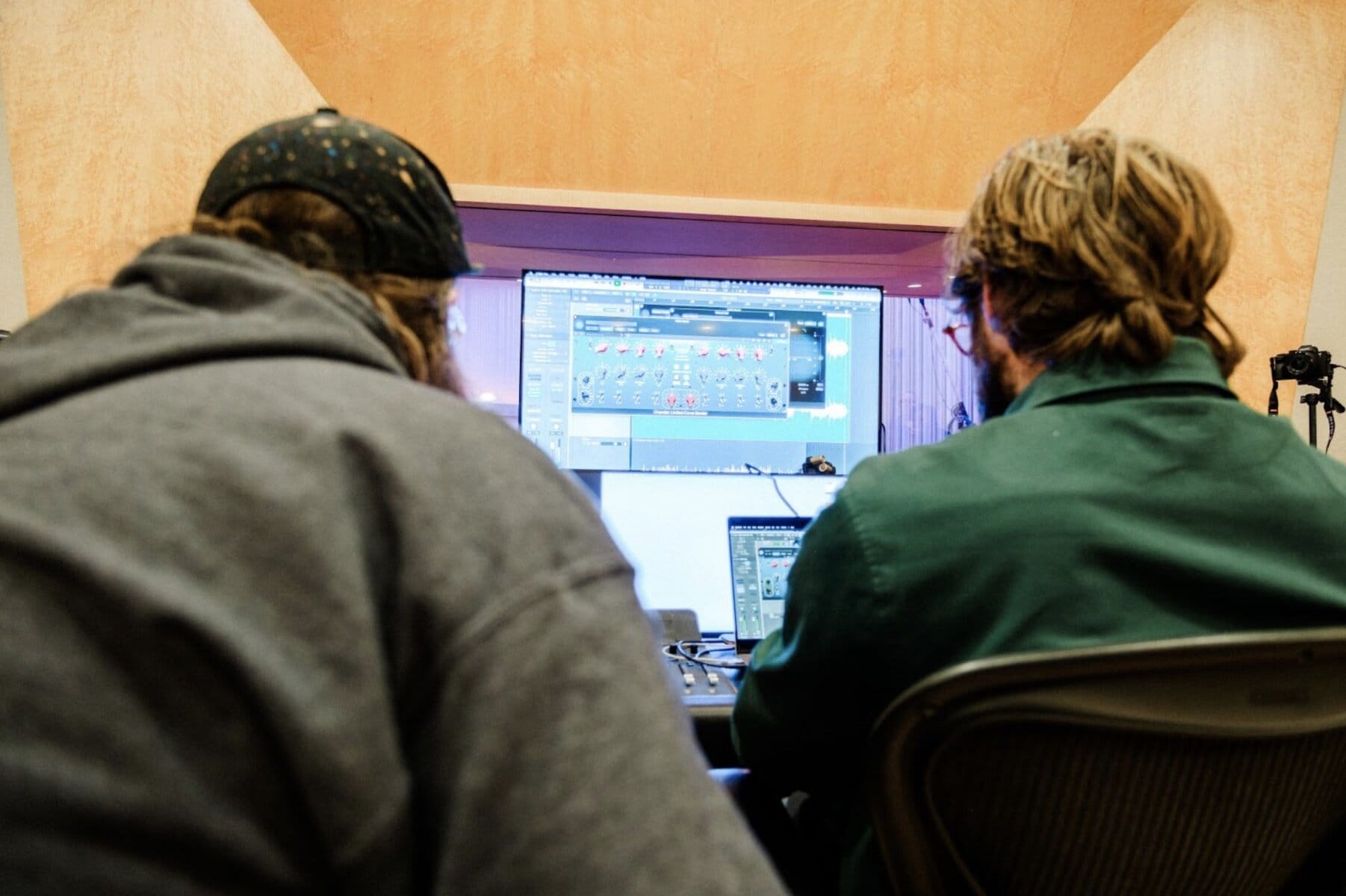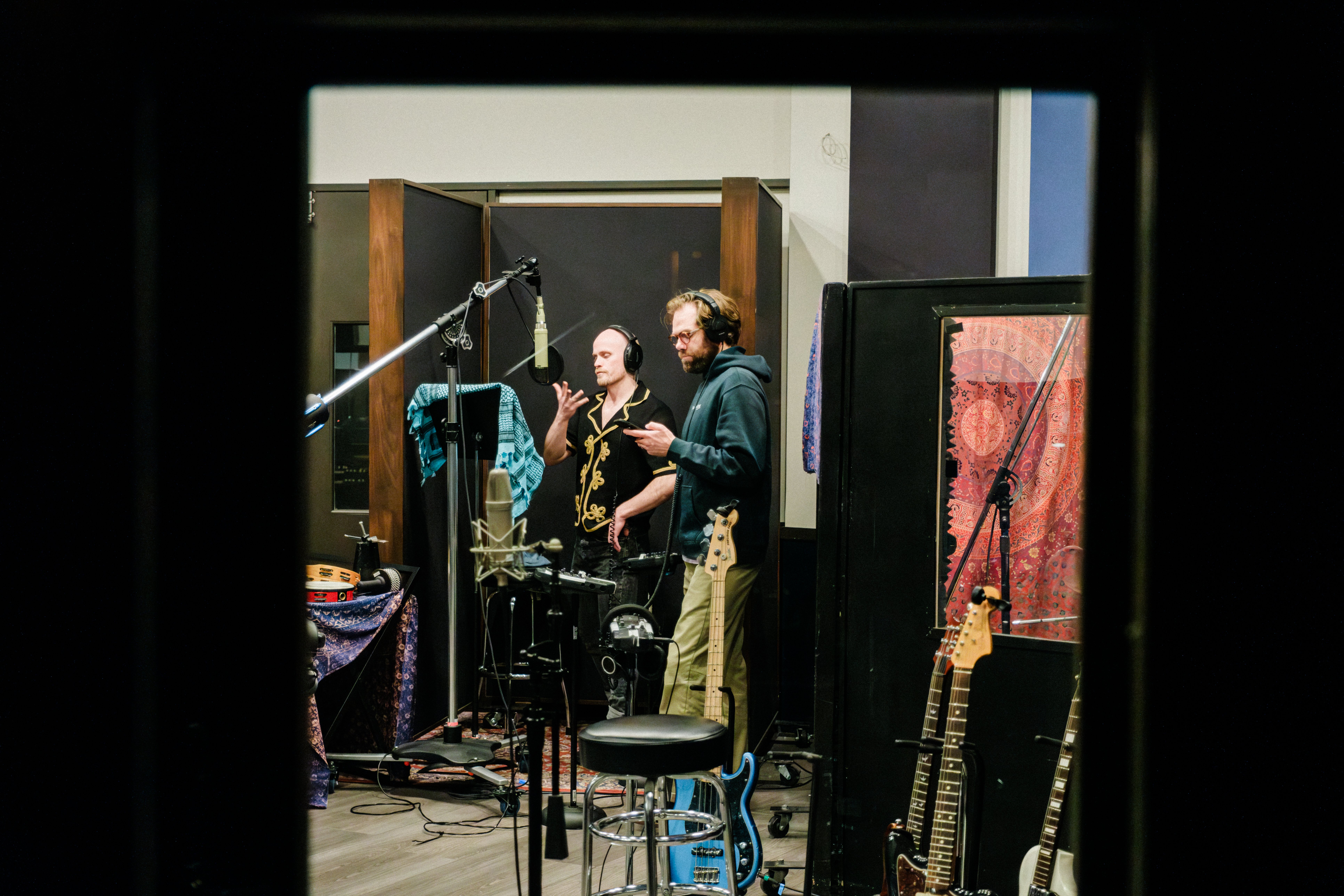You can hear it in your head.
The spaciousness your mix should have.
The pros get songs that sound wide and deep. And that’s what you want.
Well, hey! You’re in the right place.
Today you’ll learn the differences between reverb and delay. How each of them work, and how you can use them in your mixes.
Reverb vs Delay: Why You Need to Know the Difference

If you don’t know the difference between reverb and delay, you could be ruining your mix and not know why.
For example, maybe you add some reverb and your song gets muddy, but you don’t know how to fix it. (I’ll tell you how to fix that in a minute.)
Knowing the difference is crucial. So how are these two different, and how are they the same?
Technically, reverb (as well as chorus and flangers) is a delay effect. It’s a time-based repeating effect that emulates soundwaves bouncing around a room.
Delay is also time-based. But it starts after a certain amount of time and lasts for a certain number of repetitions.
Let’s talk more in depth about each…
What Is Reverb?
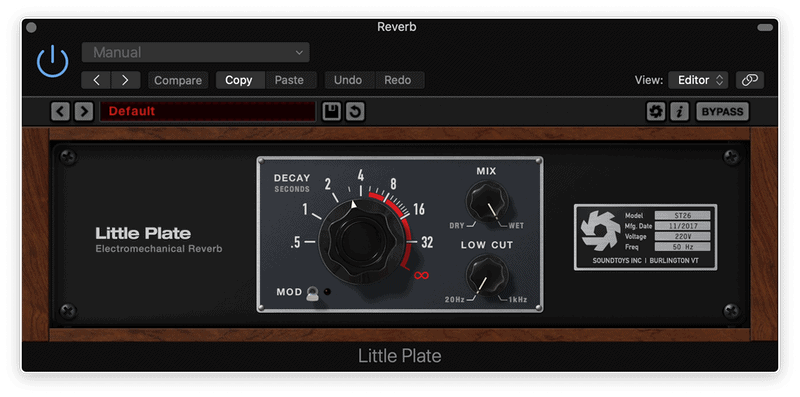
Reverb emulates the sound of a room. It repeats decaying reflections of the signal and quickly fades away.
What does reverb do?
It gives your mix depth and space like an actual room would. You can use it to put the listener and the song in a certain place.
If you use reverb well, you can transport the listener to your own soundscape. Controlling where they are in relation to the music.
Reverb is also useful for warming or wetting a sound. It can really smooth out an instrument and make it more comforting to the ears.
Reverb Parameters
For you to know how to use reverb, you’ve got to know the parameters. And by parameters, I just mean the dials on your reverb plugin.
So here are the most common settings for reverb:
- Type: there are many different types of reverb. (We’ll cover them below.)
- Size: also called room size or depth. This tells you how big the emulated room is. The bigger the size, the longer the reflections will last.
- Decay: also called reverb time. This tells you the time it takes for the reverb reflections to gradually stop (or decay).
- Pre-delay: the time between the first sound from the source to the first reverb reflection.
- Early reflections: also called initial reflections or pre-echoes. These tell you the volume of the first reflections.
- Diffusion: also called shape. This tells you how much diffusion is happening in your emulated room. (Think of what diffusion panels do in acoustic treatment of an actual room.)
- Mix: also called wet/dry mix. This tells you the mix of your wet signal (with reverb) and your dry signal (without reverb).
The Different Types of Reverb
Now let’s talk about the many types of reverb.
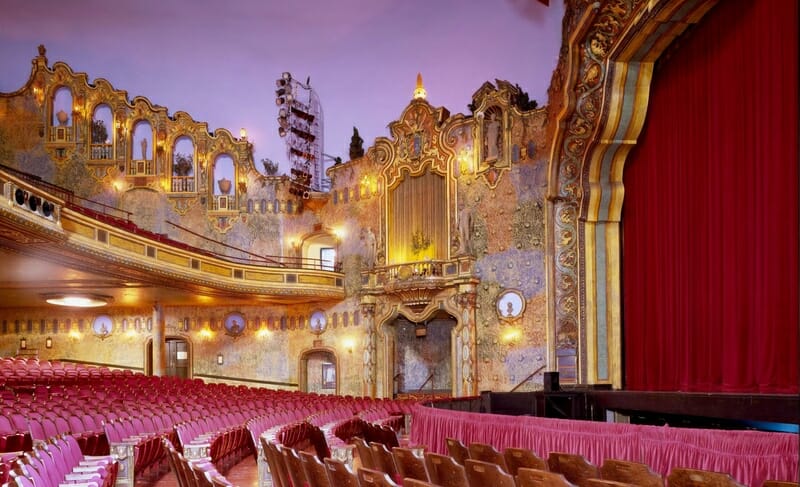
Parameters are available within each type of reverb. Here are the most common types:
- Hall: emulates the reverberations of a concert hall or equivalent large space.
- Chamber: emulates the reverberations of an echo chamber.
- Room: emulates the reverberations of a medium-sized room.
- Stage/live: emulates the reverberations you’d hear at a rock concert.
- Church/cathedral: emulates the reverberations of an antique church. (Think high ceilings, stone, glass windows.)
- Gated: stops the decay of reflections with a noise gate, giving it a boomier echo sound.
There are many other types of reverb, but this list includes the ones you can start with.
What Is Delay?
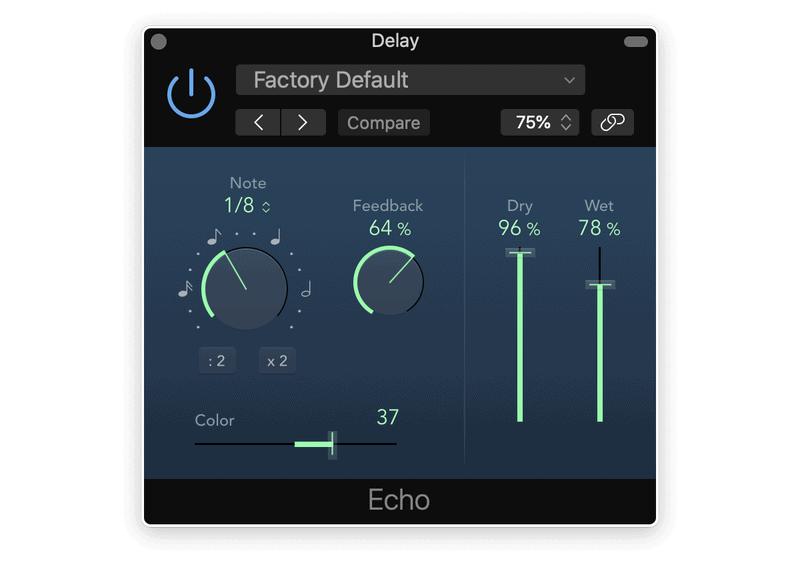
Delay repeats an audio signal at regular intervals, decaying with each repetition.
Think of it like this…
Delay copies your sound. Then it applies it back onto your sound but at a later time and with a gradually decreasing volume.
Some people call it echo. That’s not totally accurate, but it is a helpful comparison.
It’s like yelling into the Grand Canyon. You hear your voice coming back at you a moment later, repeating until it disappears.

Delay Parameters
Delay can quickly make your mix messy if you’re not sure what you’re doing. So here are the parameters that most delay plugins have:
- Delay time: the time it takes for the first repetition of the delay to kick in.
- Sync: this lets you synchronize the delay’s repetition with the song’s BPM.
- Low/high cut: lets you add a high-pass or low-pass filter to your delay.
- Feedback: the amount of signal you want feeding back into the sound source. The higher the amount, the more echoey it will sound.
- Phase: inverts the phase of the signal.
- Wet/dry mix: the balance between the wet (with delay) and dry (without delay) signals.
The Different Types of Delay
As with reverb, there are many types of delay. These are the most commonly used delays:
- Slapback: quick, punchy delay that mimics a large room.
- Doubling: similar feedback time to slapback delay but with a shorter delay time. Basically, it sounds like it doubles your signal.
- Loopback: works like a typical delay except it doesn’t have decay. It will loop your signal continuously unless you manually adjust or remove it.
- Chorus: copies the original signal like a typical delay. Then it alters the frequency before adding it back in.
- Flangers: basically, a chorus effect but with a shorter delay time.
- Phaser: sounds similar to a chorus or flanger effect. But it uses all-pass filters instead of actual delay.
There are many other types of delay, both digital and analog. But this list includes the basic ones you need to know about.
When to Use Each
At the beginning of this post, I said you need to know how and when to use reverb and delay.
We covered the how. Now let’s talk about when to use each of these effects.
The main takeaway for both is to be subtle.
Little moves can have a big influence.
You want to add just enough of each that the song has more space and depth. But you don’t want too much that the listener is distracted by the reverb and delay.
If these effects distract from the song at all, turn them down.
This is the biggest mistake I made with these plugins when I first started mixing my own music. (That and not really knowing what all the settings meant.)
It’s also super smart to bus your effects.
Here’s how you use a bus for reverb or delay:
- Create a new track.
- Apply your desired effect to the new track (reverb or delay—never both on the same track).
- Send any tracks that need that effect to this new bus track .
Then you can adjust the reverb or delay for all the tracks at once.
Sidenote #1: avoid adding reverb and delay to the kick drum, bass, and anything else in the lower frequencies. That will make things muddy.
Sidenote #2: don’t ever add reverb or delay to the master channel. That’s something you or your mastering engineer can do during mastering.
When to Use Reverb
A good rule to follow is to start with the reverb.
Let the reverb fill out the song, then you can decide whether delay is needed. That is, unless there’s a very specific delay sound you’re hearing for an instrument.
Another rule beginners may want to follow is to stick with one type at a time.
Applying reverb for one instrument? Use the same reverb on any other instrument that needs it (i.e., use a bus track).
The same goes for delay.
When to Use Delay
Delay does a very good job of opening up a mix. That’s why you can add it in if reverb muddies your mix a bit.
Not only can delay add to the space you’re trying to create, but it can also give you some cool sounds.
Putting a subtle delay on the main vocal can add depth and even a sense of warmth. The longer the delay time, the softer and more welcoming the sound can be.
The Bottom Line Is This…
Reverb and delay are meant to give space, depth, richness, and even warmth to your mix. Use them to make the listener feel as if they are in a room with the band.
But use them lightly and intentionally.


